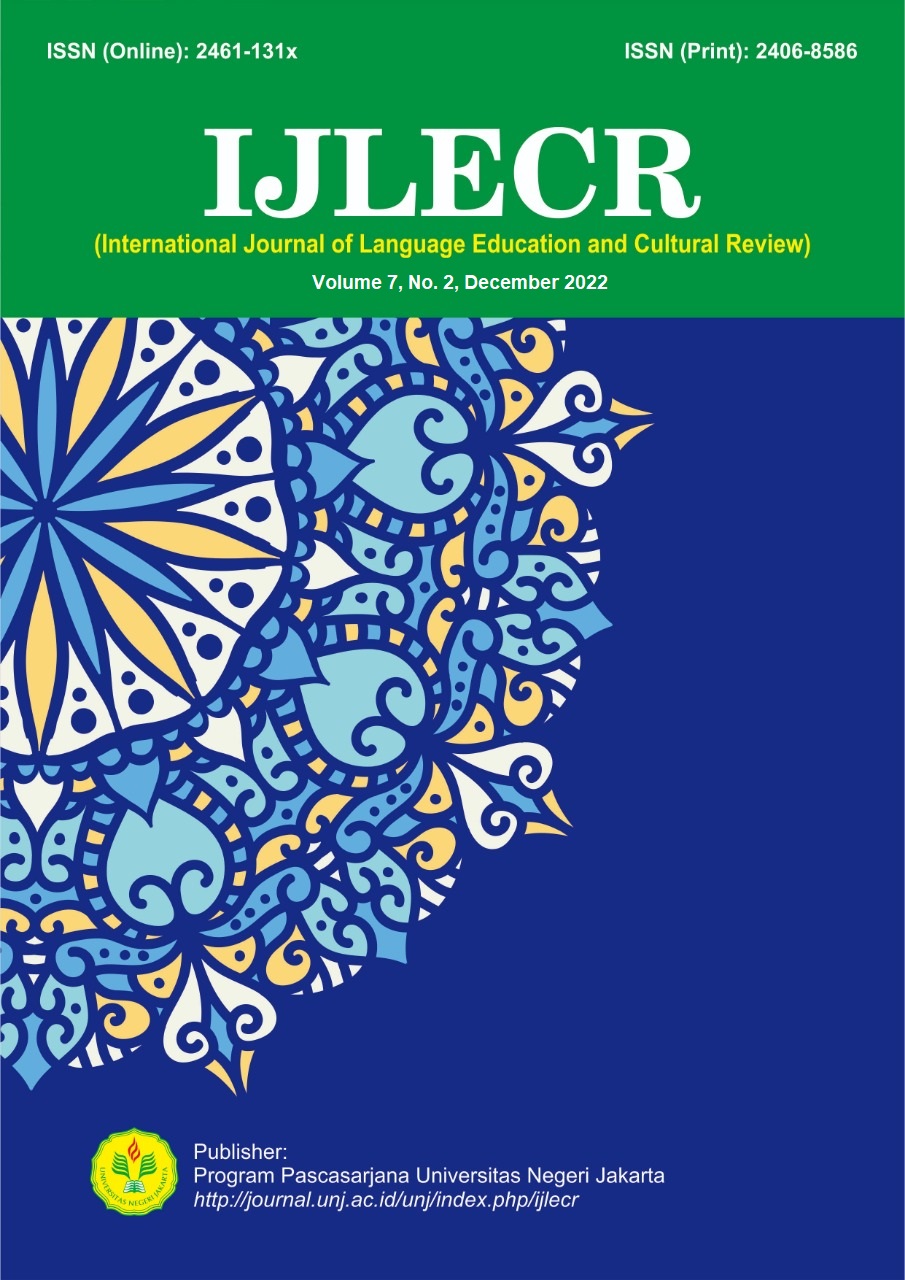APPLICATION OF THEO VAN LEEUWEN'S CRITICAL DISCOURSE ANALYSIS IN LIPUTAN6.COM NEWS ON THE DISSOLUTION OF BSNP
DOI:
https://doi.org/10.21009/IJLECR.072.15Kata Kunci:
News, Critical Discourse Analysis, Theo Van LeeuwenAbstrak
The study was conducted with the aim of analyzing and discussing the use of language in the text of the news discourse on the liputan6.com page on the dissolution of the BSNP (National Education Standards Agency) which was published on September 3, 2021 using the framework of Theo Van Leeuwen's critical discourse analysis model. This research is qualitative research that uses descriptive methods. The data taken in this study uses content analysis. In addition, this research also refers to the study of literature in the form of journals, books and other literature so that a comprehensive and holistic discussion of the research topics raised is obtained. The results of the discussion obtained from this study are based on the category of exclusion and inclusion strategies according to Theo Van Leeuwen. Categories of exclusion strategies include pasivation, nominalization and replacement of sentence clauses while inclusion strategy categories include differentiation-inference, objectivation-abstraction, nomination-categorization, nomination-identification, determination-indetermination, assimilation-individualization and association-dissociation. With an analysis of the use of this category of exclusion and inclusion strategies, audiences can understand how the emphasis of marginalized actors, actors who are championed and power relationships on the process marginalizes or fights for these aspects.








